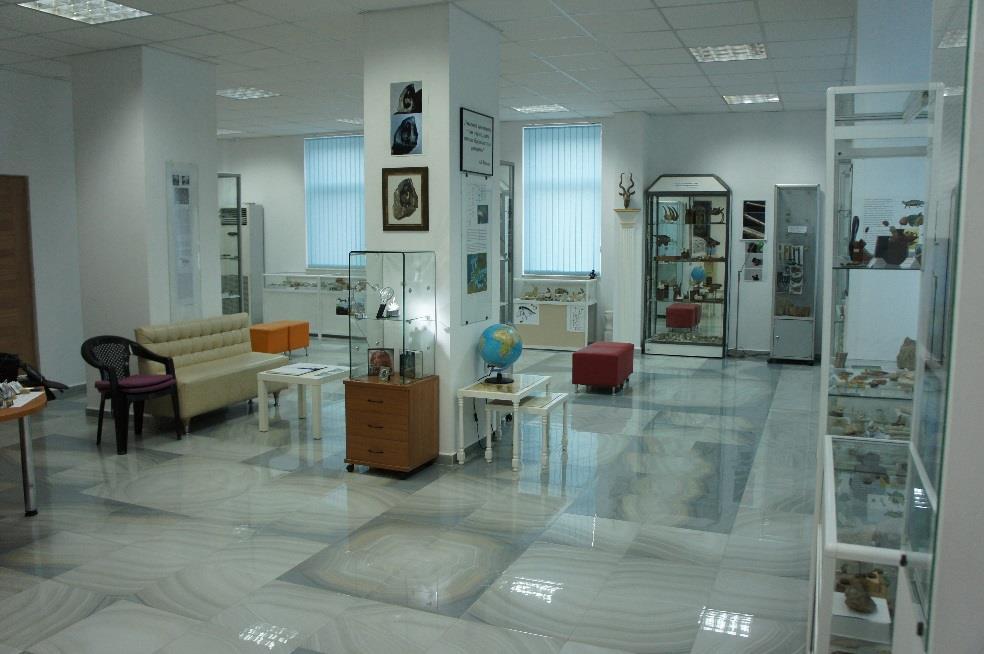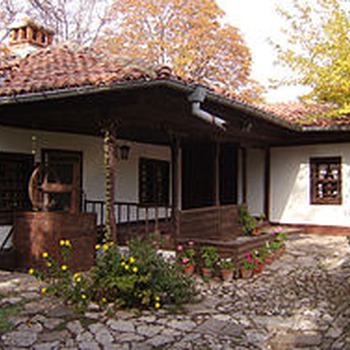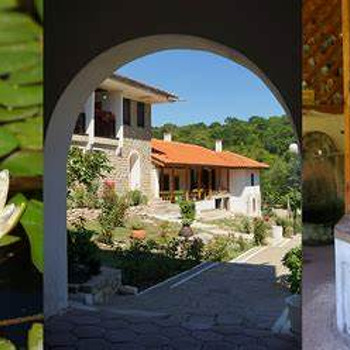Paleontological Museum Gema World - Chirpan
Overview
The Gema-World Museum traces the flora, fauna and human history of the Chirpan lands. The museum has two floors and opened on September 4, 2017. In the current exhibition you can see paleontological and archaeological exhibits collected only from the territory of the Chirpan region. As an introduction to the fossil exhibits are exhibited minerals, crystals, including semi-precious and precious stones, iron ores, fragments of meteorites, as well as a trace of lightning that fell on a clay base. The time when the Bulgarian lands were the bottom of an ocean (the so-called Tethys Ocean) is traced chronologically. This covers the Jurassic and Cretaceous periods. They are exhibited in a wide variety - sea mussels, snails, worms, sea urchins, corals, sea lilies and more. Of particular interest are fossilized molluscs such as jellyfish, octopus and cuttlefish. The ocean retreated about 66 million years ago. From the time of the Miocene (24-5 million years) are the main part of the presented fossils. A wide variety of antelope and gazelle skulls (some of which have fossilized brains), bones, teeth, jaws of hipparions (the three-toed ancestor of the modern horse), rhinos, giraffes, sloths, turtles and pigs are on display. Predators are represented by the saber-toothed tiger, hyena, bear and other small carnivores. Remains of several species of mastodons as well as deinoterium can be seen from the proboscis animals. The skull of the deinoterium exhibited in this museum is the fourth found in the world. With its size, it is one of the largest and best preserved skull. Its tusk teeth are 130 cm, which makes them the longest found so far. During the same period, the first hominids appeared. The museum exhibits a tooth of a hominid of the genus Grecopithecus (which we briefly call Chirpanopithecus), which lived about 7 million years ago. The paleontological exposition is supplemented by a large number of fossilized tree species, plant prints, river mussels and others. For a more complete picture of the past and the history of the Chirpan region, the periods related to human presence are chronologically traced: Paleolithic, Neolithic, Chalcolithic, Bronze Age, Thracian-Roman period, and the Middle Ages with the artifacts characteristic of those times. Lastly, there are paintings by Bulgarian artists representing rural life and people's work.
Recommended
Peyo Yavorov House-Museum; Nikola Manev Art Gallery; The basilicas in the Karasura-Chirpan area; Thracian center Halka Bunar, Partizanin village; The Chirpan Monastery of St. Athanasius


 Bulgarian
Bulgarian Romanian
Romanian


